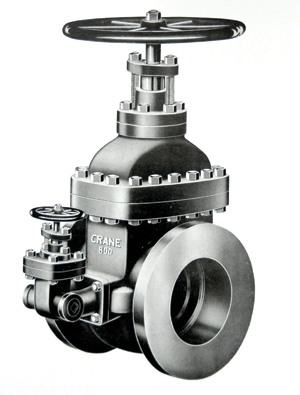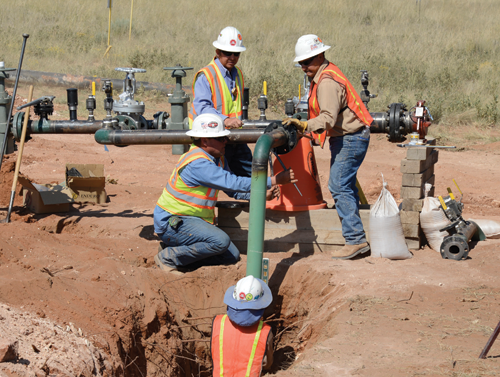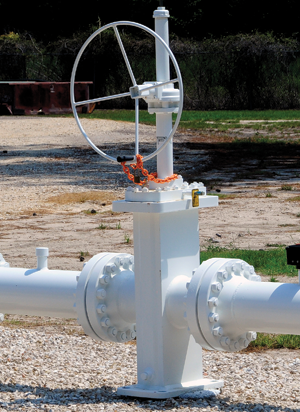Valve Standards: Yesterday, Today and Tomorrow
Valve standards are both the laws of the land and the roadmaps to be followed on the road to quality, especially for the oil and gas industry.
#standards
One point about standards that is universally accepted is this: Today’s versions are much more comprehensive than the originals were.
Going back to “the great generation of origination” for many valve standards (1920–1940), it is easy to see why standards were created in the first place. The oldest valve standards development organization is the Manufacturers Standardization Society (MSS). MSS was created for one primary reason: To develop valve and fitting standards that would allow the interchangeability of valves and fittings in piping systems. Up to this point each manufacturer created valves to whatever dimensions were convenient. The advantage of this situation was that it tied a valve and fitting user to a particular manufacturer’s product. However, this was not a good thing for the valve buyer, and even the various manufacturers soon saw this as a problem as well.
THE QUEST FOR INTERCHANGEABILITY
Initially, the most-glaring need for standardization was for flanges so that all valves and fittings would be interchangeable. Before developing common flange standards, valves were offered with blank flanges, and the purchaser specified the bolt-hole drilling. Another issue was that end-to-end dimensions of valves varied.
The need for interchangeability was the primary focus of valve standards through the second world war. In fact, valve standards were generally left in the status quo position throughout that conflict. Many new piping and valve design developments were unleashed after 1945, however. New valve designs, new materials and new service conditions required greatly revised valve standards as well as the creation of new documents to meet all the requirements. At this time, valve standards creation was based upon near-universal agreement and acceptance by committee members (manufacturers and end users). This bilateral cooperation would last for another three decades or so.
Throughout this period, the one constant was that both the location of manufacturing facilities and ultimate installation locations for the bulk of valves was in the United States. A door to offshore manufacturing was opening, but the crack was not yet big enough for beefy foreign players to enter.
IMPORTS AFFECT STANDARDS
A disappointing side-effect to this situation was that it fostered a feeling of distrust between the valve-user community and some domestic manufacturers that chose to quickly outsource manufacturing to low-cost countries without performing the proper due diligence. The situation would drive valve standards to become much more detailed and stricter in many regards to police the imports.
This new reality of valve manufacturing and quality would become the overriding reason for new valve standards and revisions that came over the next 20 years. Gone forever was the deal of the handshake, trust of the spoken word, and confidence in decades of previous product development and quality manufacturing.
ISO VS. USA
While all this was going on in U.S. standards development meetings, groups such as the International Organization for Standardization (ISO) were creating competing valve standards for the European market. Although ISO meetings are open to participation from all countries, U.S. manufacturers and U.S. end users chose not to participate to any large extent. One important note is that, while multiple companies and end users can participate in U.S. standards development organizations (SDOs), in ISO, each country only gets one vote, so multiple companies usually do not attend the meetings.
Attempts were made by the American Petroleum Institute (API) during the late 1990s to work with ISO to jointly develop cobranded valve standards. This did not last long because the standards development and update processes of the two organizations were very different at that time. Another factor that virtually stopped such cooperation was a directive from the U.S. government that this country’s companies could not participate in organizations where American intellectual property could potentially be shared with countries that were “enemies” of the U.S., such as Iran, which is an active member of ISO.
PET PEEVES AND NEWER TYPES
New valve standards and revisions of older standards should address specific subjects or issues and help solve industry problems. However, sometimes the personality of the SDO representative or the representative’s company has resulted in an addition to a standard that was too specific and focused on a relatively obscure “pet peeve.” Once published, it is usually difficult to get pet-peeve paragraphs out of a standard.
The newest type of valve standard to hit the valve industry landscape is the multiple end-user-created addendum. In the oil and gas industry, the current source for these types of documents is the International Association of Oil & Gas Producers (IOGP), a consortium of multinational oil companies. Under the guise of trying to lower the cost for commodity items (valve types most frequently purchased), IOGP has thus far issued documents to be attached to the requirements of API 6D and API 600 valves. IOGP standards are hefty documents that often contain more pages than the standards they are modifying. The creators of these documents are also closely aligned with ISO, and valve manufacturers are not allowed to be members of IOGP.
The development of valve standards takes a lot of time, time which comes from the schedules of the volunteer committee members. Although the U.S. is still the leader in the creation of valve standards, unless domestic SDOs do a better job of marketing their standards to a worldwide audience, the future of valve standards could be one that is led by ISO and IOGP-type documents: documents that are created with far less valve manufacturer participation.
GREG JOHNSON is president of United Valve (www.unitedvalve.com). He is a contributing editor to VALVE Magazine and a current Valve Repair Council board member. He also serves as chairman of the VMA Communications Committee, is a founding member of the VMA Education & Training Committee and is past president of the Manufacturers Standardization Society. Reach him at greg1950@unitedvalve.com.
RELATED CONTENT
-
WCC and LCC Casting in ASME B16.34
Q: Why do WCC and LCC castings have different maximum allowable temperatures in ASME B16.34?
-
Valve Basics: New Valve Modifications
Valve modification can be defined as: adding value to standard or “commodity” valves by installing actuators, special trims, different end-connections, packing and gaskets, and other accessories or upgrades not provided on the original product.
-
An Overview of ASME B16.34-2017
The content of American Society of Mechanical Engineers (ASME) Standard B16.34 is essential to those who deal with flanged, threaded and welded-end valves.










 Unloading large gate valve.jpg;maxWidth=214)


